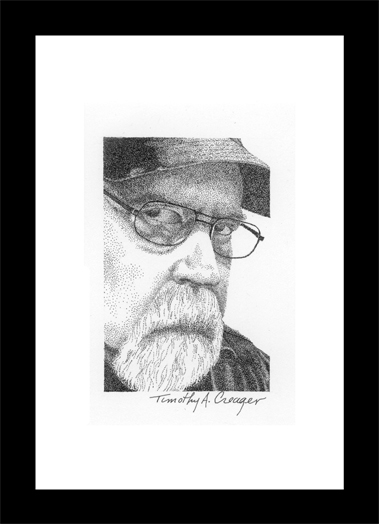These works have been or are currently being shown.
Recently I have been working in the stipple technique. In a drawing, the dots are made of pigment of a single color, applied with a pen; the denser the dots, the darker the apparent shade. This is similar to—but distinct from—pointillism, which uses dots of different colors to simulate blended colors.
The technique became popular as a means of producing shaded line art illustrations for publication, because drawings created this way could be reproduced in simple black ink. The other common method is hatching, which uses lines instead of dots. Stippling has traditionally been favored over hatching in biological and medical illustration, since it is less likely than hatching to interfere visually with the structures being illustrated (the lines used in hatching can be mistaken for actual contours), and also since it allows the artist to vary the density of shading more subtly to depict curved or irregular surfaces.
Images produced by half toning or dithering and computer printers operate on similar principles (varying the size and/or spacing of dots on paper), but do so via photographic or digital processes rather than manually. These newer techniques have made it possible to convert continuous-tone images into patterns suitable for printing, but artists may still choose stippling for its simplicity and handmade appearance. The Wall Street Journal still features stippled and hatched portraits known as hedcuts in its pages, a holdover from its earlier avoidance of photographs.
This is a labor intensive process often requiring weeks of work not hours, which is reflected in the prices.

Peoples Choice Award
Pen and Ink, (Stipple)
(approximately 2.6 in X 3.5 in)
Dec. 03, 2013 - Jan. 04, 2014
Little Dickens Miniatures
Backstreet Gallery, Florence OR.
For Sale $90.00